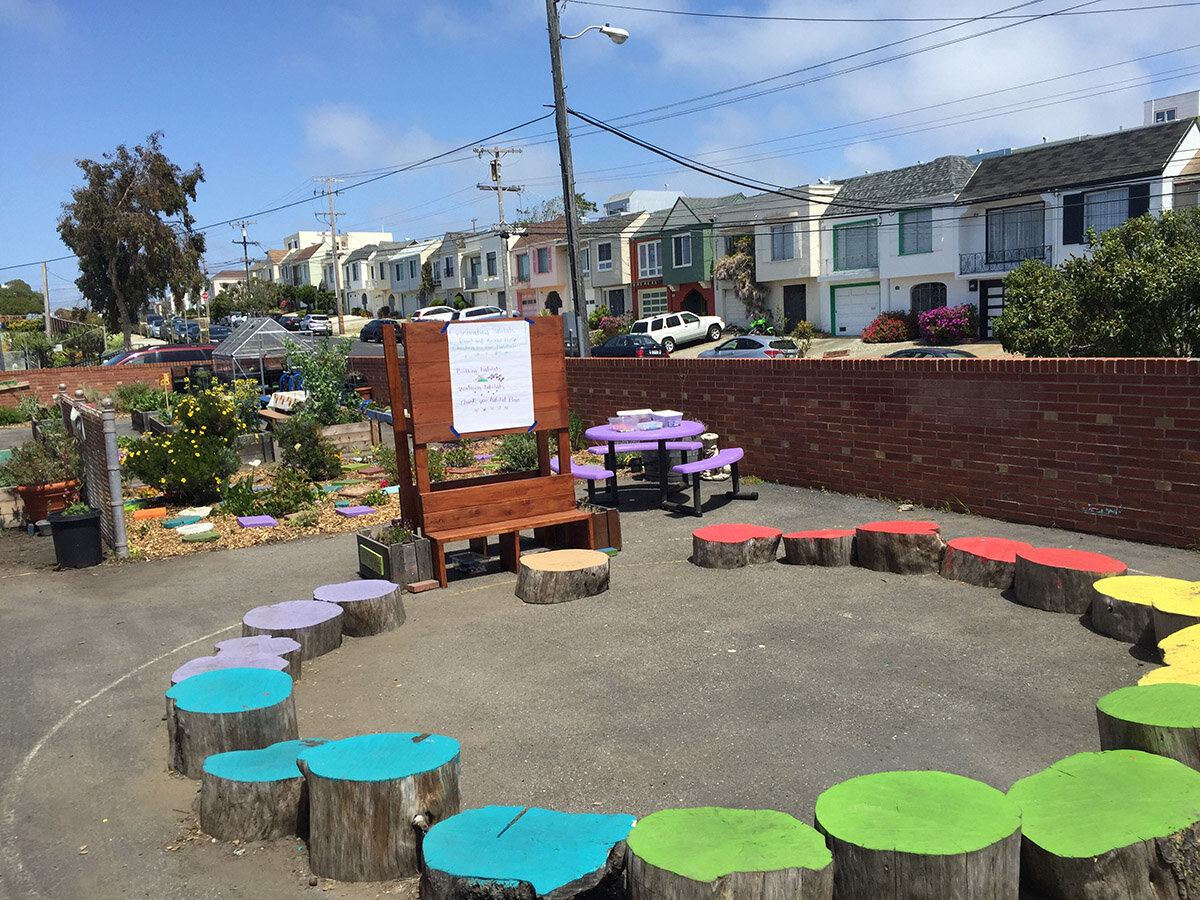Small Cohort Instructional Plans
This tool is intended to support district and school leaders to develop plans for robust, high-quality outdoor teaching and learning that is integrated into small-cohort instruction at the school site for their most vulnerable students. Use this tool in conjunction with our instructional materials supports for outdoor science learning and schedule examples to engage leaders and teachers in outdoor learning. This document includes key capacities for schools and districts to consider, including equity, vision, communication, leadership, and curriculum. Taking action on these key capacities will ensure that teachers and administrators can take advantage of their unique local resources and provide equitable outdoor learning experiences across their school or district.
A “small cohort” is a stable group of no more than 14 students and one or two supervising adults (i.e., “small-cohort educators” that may be certificated district staff, non-certificated staff, or contracted outdoor educators). Many districts and schools have formed small, onsite cohorts to provide in-person support during remote learning for vulnerable students who are most impacted by preexisting inequities that have been exacerbated by the pandemic. This requires creating both instructional and professional learning designs that are inclusive and take into account the voices of marginalized students/families. For example, leaders of small cohorts can maximize the benefits of the small-cohort model by replacing remote learning whenever possible with rich outdoor learning experiences among students.
KEY RECOMMENDATIONS
In order to support the development of key capacities for equitable, high-quality outdoor learning, we provide a set of overarching recommendations applicable to all phases of school reopening (small cohort, hybrid, or 100 percent in person).
Design at the margins. Center instruction plans on the most vulnerable students in the system.
Prioritize science. Allocate equal amounts of time to science as other core academic subjects in the elementary grades.
Utilize outdoor spaces. Incorporate multiple opportunities for every student to learn outdoors, including bringing instruction of “core” subjects outside.
Consider staffing. Utilize classified staff, paraprofessionals, non-certificated staff, expanded learning providers, or contracted outdoor educators to provide outdoor instruction.
Prioritize communication. Establish mechanisms of communication and feedback among classroom teachers, school leaders, resource specialists, small-cohort educators, and students/families.
Invest in professional learning. Invest in “just-in-time” professional learning for school leaders, teachers, and staff. Consider more flexible uses of district and school professional learning and collaboration time; for example, teachers engaging in asynchronous online professional learning or shorter, more frequent professional learning sessions.
COMMUNICATIONS
Communication builds consensus about the purpose, characteristics, and outcomes of outdoor learning at the site. This includes what good outdoor teaching and learning look like and the agreed upon approaches to support marginalized students via the small-cohort model.
Share goals. Set and communicate goals for the use of outdoor spaces and outdoor instruction.
Identify a champion. Identify a “champion” for outdoor learning at the site who can support logistical thinking, vision setting, communications, instructional and professional learning support, and driving change within the small-cohort model.
Define responsibilities. Ensure that there is a clear definition of responsibilities among classroom teachers, school leaders, resource staff, small-cohort educators, and students/families (e.g., what flexibilities exist within the small-cohort model, who revises student schedules).
Coordinate. Coordinate with facilities staff to ensure adequate support for setup and use of outdoor spaces. Coordinate among cohort groups for reserving outside spaces for instruction and maintenance of outdoor spaces and with families to address concerns, questions, and needs.
Elevate stakeholder voices. Use student and family surveys, focus groups, and/or advisory boards to build empathy and understanding among school leaders and small-cohort educators about how students are experiencing outdoor learning.
Align schedules. Align the school-day schedules and times for “tiered-support” so that all students within each cohort have the same remote learning schedule. If students within a cohort have different schedules for remote learning, there will be no times when all students are free to engage in outdoor learning.
Onboard. Onboard small-cohort educators with appropriate information on health and safety, culture of the school, student rosters, and additional components that will maximize trust and relationship-building within the time-constrained settings in which many districts/schools will find themselves.
INSTRUCTIONAL IMPROVEMENT SUPPORT
Clear expectations of outdoor teaching and learning build a shared understanding of what is to be taught; how it is to be taught; and how much is to be taught at all grades represented in a site’s small-cohort model.
Inventory learning spaces. An inventory of the outdoor spaces around and nearby the school site and a “map” will ensure that each cohort has access to a space for learning.
Access instructional materials. Educators need access to high-quality activities for outdoor learning, and an established scope and sequence of existing outdoor learning curricula. An inventory of different types of materials may be needed for outdoor learning (e.g., hand lenses, clipboards, materials carts and bins, backpacks, portable chairs) to support instruction.
Engage science leaders. Establish routines for the district or school science and environmental literacy lead(s) to work with small-cohort educators on increasing the quantity and quality of outdoor learning (e.g., supporting speaking and listening time outside or grade-level commitment to do all writing time outside).
“JUST-IN-TIME” PROFESSIONAL LEARNING
Ongoing, “just-in-time” professional learning addresses both predicted and emerging needs of the implementation of outdoor learning small cohorts in a targeted way.
Underscore the benefits of the outdoors. Offer professional learning on the benefits of outdoor spaces (e.g., physical health and safety, sense of well-being in the outdoors, connection to nature, increased engagement in learning).
Highlight outdoor teaching competencies. Emphasize professional learning on assessing and increasing the level of comfort and preparedness of small-cohort educators in teaching students in outdoor spaces (e.g., managing groups outside).
Create communities of learning. Support professional learning communities that focus on maximizing student engagement and learning in the outdoors.
Affirm social-emotional learning. Provide professional learning on embedding social-emotional learning strategies into small-cohort outdoor instruction.
The implementation of outdoor small-cohort instruction will inevitably transition to another instructional model and provides insight for ultimately incorporating and developing a plan for outdoor learning into a school’s hybrid and 100 percent in-person phases of reopening.
Resources
Foundational school and district planning resources also include the California Department of Education Safe Schools for All Hub and California Collaborative for Educational Excellence Continuity of Learning: Distance and Hybrid Learning Playbooks.
Credits
This article was written by Vanessa Lujan, Sarah Pedemonte, Jedda Foreman, and Craig Strang of The Lawrence Hall of Science at University of California, Berkeley.
National COVID-19 Outdoor Learning Initiative
The National COVID-19 Outdoor Learning Initiative supports schools and districts around the country in their efforts to reopen safely and equitably using outdoor spaces as strategic, cost-effective solutions to increase physical distancing capacity onsite and provide access to abundant fresh air. The Initiative seeks to equitably improve learning, mental and physical health, and happiness for children and adults using an affordable, time-tested outdoor approach to keeping schools open during a pandemic.













